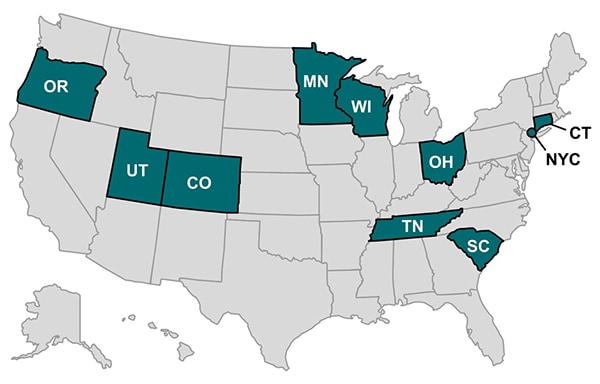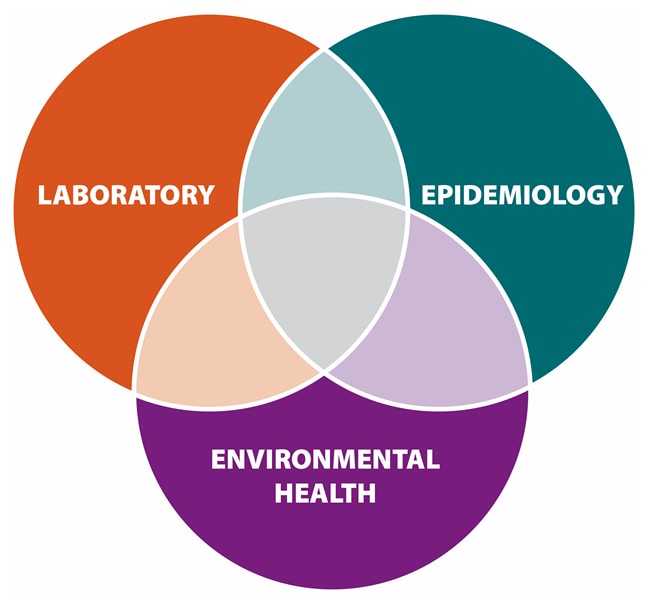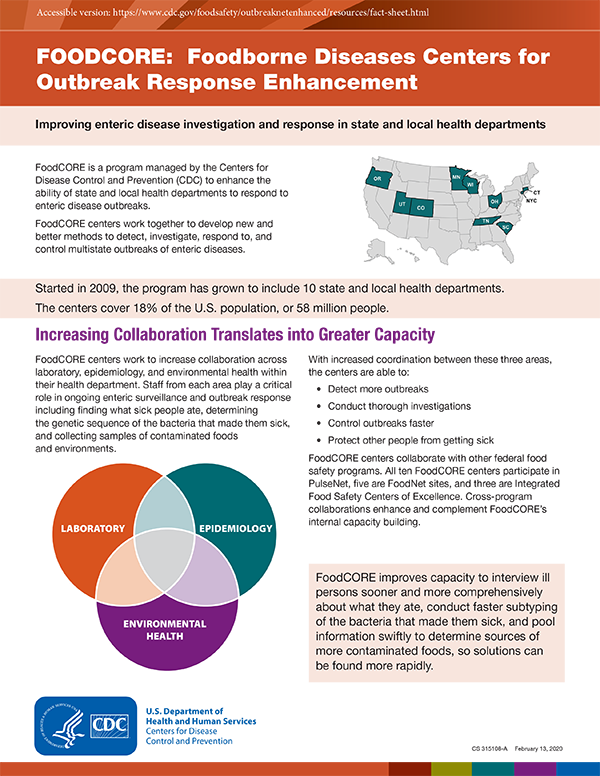FoodCORE Fact Sheet
Improving enteric disease investigation and response in state and local health departments

FoodCORE is a program managed by the Centers for Disease Control and Prevention (CDC) to enhance the ability of state and local health departments to respond to enteric disease outbreaks. FoodCORE centers work together to develop new and better methods to detect, investigate, respond to, and control multistate outbreaks of enteric diseases.
Started in 2009, the program has grown to include 10 state and local health departments. The centers cover 18% of the U.S. population, or 58 million people.
Increasing Collaboration Translates into Greater Capacity
Download a print version of the FoodCORE Fact Sheet pdf icon[PDF – 323 KB]

FoodCORE centers work to increase collaboration across laboratory, epidemiology, and environmental health within their health department. Staff from each area play a critical role in ongoing enteric surveillance and outbreak response including finding what sick people ate, determining the genetic sequence of the bacteria that made them sick, and collecting samples of contaminated foods and environments.
With increased coordination between these three areas, the centers are able to:
- Detect more outbreaks
- Conduct thorough investigations
- Control outbreaks faster
- Protect other people from getting sick
FoodCORE centers collaborate with other federal food safety programs. All ten FoodCORE centers participate in PulseNet, five are FoodNet sites, and three are Integrated Food Safety Centers of Excellence. Cross-program collaborations enhance and complement FoodCORE’s internal capacity building.
FoodCORE improves capacity to interview ill persons sooner and more comprehensively about what they ate, conduct faster subtyping of the bacteria that made them sick, and pool information swiftly to determine sources of more contaminated foods, so solutions can be found more rapidly.
Measuring Processes to Demonstrate the Impact of FoodCORE Resources
Performance metrics were developed and tested by FoodCORE centers to measure the burden, timeliness, and completeness of foodborne disease activities. Metrics span from outbreak surveillance and detection through investigation, response, control, and prevention measures.
FoodCORE centers report data for Salmonella, Shiga toxin-producing Escherichia coli (STEC), and Listeria (SSL); and norovirus, other enteric disease pathogens, and outbreaks of unknown etiology (NOU).
Metrics data are published online to show the impact of the changes that the FoodCORE centers have implemented in their health departments.
Centers increased the proportion of SSL isolates with whole genome sequencing (WGS) information from 45% in 2016 to 91% in 2018.
Centers decreased the time from receipt (or recovery) at the WGS laboratory to the sequence being shared with the national database from 18 days in 2017 to 10 days in 2018.
Centers increased the proportion of SSL case-patients with an attempted interview from 94% in 2010 to 97% in 2018.
Sharing Experiences to Improve Processes in Other Jurisdictions
FoodCORE centers are test kitchens for new ideas to investigate and respond to outbreaks of enteric illness. When they find something that works, a success story or model practice is written and published to the FoodCORE website so others can learn and implement successful practices in their health departments.
Success Stories
Success stories highlight outbreak investigations or projects that were particularly successful in a FoodCORE center. Topics of success stories include:
- Contributions to solving large multi-state outbreaks
- Adaptation to changing laboratory methods
- Collaboration within a FoodCORE center and across centers
- Use of novel strategies to detect more cases and interview them more thoroughly
Model Practices
Model practices describe what’s been successful in FoodCORE centers. When a practice works across centers with varying sizes, structure, and burden, it’s likely to work in other jurisdictions too. These practices are documented so that others can learn from FoodCORE centers and replicate what’s worked. Topics of published model practices include initial case-patient interviewing, student interview teams, and team communication and collaboration. An earlier model practice on laboratory timeliness and completeness is undergoing revision to ensure that it remains accurate as surveillance and response methods and technologies have advanced in recent years.
What’s next for FoodCORE?
FoodCORE centers are at the forefront of enteric disease surveillance and outbreak response. They will continue to innovate and share their experiences with others on topics such as whole genome sequencing, texting case-patients for interviews, and online illness complaint systems. Their successes and lessons learned will be shared online and at conferences and meetings.
